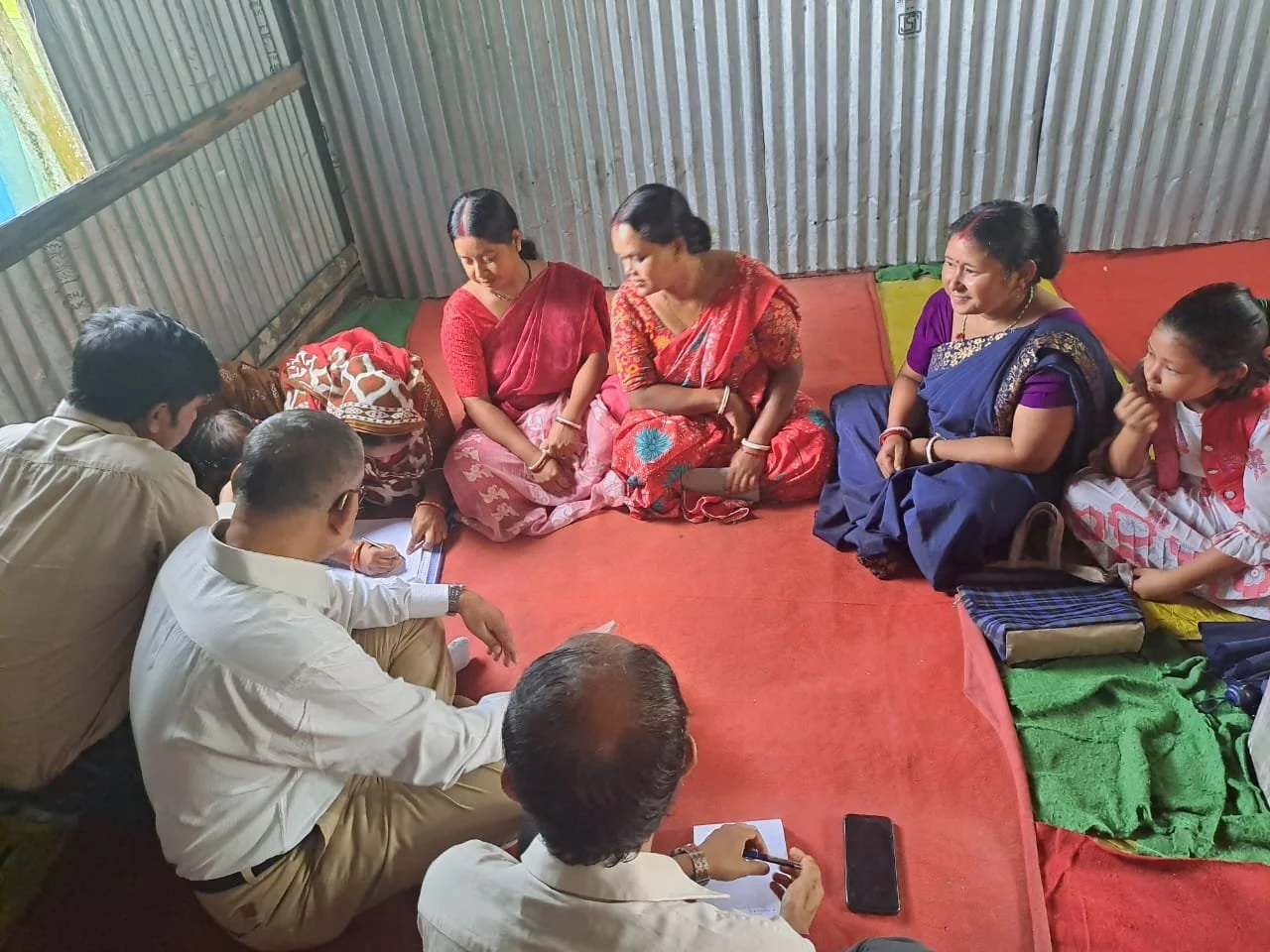Diversified agriculture and women’s equity; key learnings in the MTR of the RUPANTAR project
The RUPANTAR project, funded by ACIAR, Australia aims to understand the food system of the Indo-Gangetic plain. Agricultural diversification has been set in the project as the background to understand the dynamics of the food system in the region. Gender dynamics play a complex but vital role in the household food system. It is crucial to get insight into the gender dynamics in Agriculture including animal husbandry to divulge into the basis of transformation in the smallholder food system apart from addressing the agenda of ‘gender equity’ of the Sustainable Development Goals of the United Nations.
In India, approximately 18% of the nation's GDP is generated by the 60% of the population that works in agriculture (World Bank, 2019; NSO, 2019). In rural India, around 80% of women are employed and rely on agricultural development. In India, women make up 48% of self-employed farmers and 33% of the labour force in agriculture (Patel and Sethi, 2021). The work of rural women is responsible for between 60 and 80 per cent of the country's food production. Agro/social forestry, fisheries, horticulture, livestock rearing, post-harvest activities, and other related industries are also occupied by rural women. They handle most of the manual labour-intensive tasks in agriculture, including managing cattle, gathering fodder, milking, threshing, winnowing, etc. These statistics do not speak about the empowerment of women in terms of providing economic opportunities, enhancing food security, and promoting decision-making roles.
During the Mid Term Review Meeting, which took place during September 11–14 at U.B.K.V. in Cooch Behar, India, a full day on September 14, 2024, was devoted to discussion and interaction with the women farming community to comprehend the concerns surrounding women's empowerment. Prof. Sucharita Sen, a specialist in gender-related socioeconomic research from Jawaharlal Nehru University in Delhi, India, conducted the entire session. At the outset, Prof. Sen shared her experiences and talked with the scientists from ACIAR, CIMMYT, and U.B.K.V. about socioeconomic issues that could be significant from the project's gender perspective. Following the conversation, two Focus Group Discussions (FGDs) were held separately with fourteen women involved in goat farming and the project's implementation pathway. An hour or so was spent on discussions. There was one moderator and two were taking note of the talk. In the afternoon session, two in-depth interviews were conducted with two women farmers associated with chilli cultivation under the RUPANTAR project. In-depth interviews are conducted to collect information about the behaviour, attitude and awareness of the interviewees to get to the root causes of likes/dislikes, perceptions and beliefs.
The key learnings from the FGDs are as follows:
Retaining income: In most cases, the income from goat rearing mainly stays with the women, who are also the primary caretakers of the goats. This income-retaining ability increases their status within the family and thereby helps them grow their decision-making power.
Economic freedom: With the income from goat rearing, the women in some cases meet their personal requirements for upscale goods (e.g., jewellery, Saree, etc.). Often, they contribute their income to assist their child's education, cover medical costs, and support farming activities. Their confidence in their ability to make decisions grows because of those actions.
Drudgery vs. freedom: Women appreciated working together and receiving compensation after the fieldwork because they saw paid work in other people's fields as liberation from their everyday household chores rather than drudgery. Not every woman is permitted to pursue compensated employment. The decision to go on paid labour is mostly influenced by household norms and economic standing.
Deep-seated patriarchy: While almost all the women acknowledged that they had some financial independence because the money they receive from raising goats stays with them, they nevertheless acknowledge that they are less powerful than men and wish to continue that way.
The key learnings from the in-depth interview are as follows:
Women are key for successful chilli cultivation: The chilli farmers choose women labourers for diverse operations in chilli farming as the women labourers are significantly less costly than men. Women are the most adept at harvesting chillies.
Chilli cultivation; an income opportunity for women: During a three-to-four-month period, chillies are picked several times. To select the mature chillies without injuring the plant, a huge number of hands are needed for the harvesting process. For the work, women are preferred. It's a chance for the women to make some money. Skilled female employees from nearby farming households are also employed to do the tasks. For this reason, farmers that have a large family group choose to grow chillies.
Better nutrition through chilli cultivation: Since chillies are harvested regularly, they generate money over the course of three to four months. It helps the farmers, and their families to purchase quality food like fish, and meat apart from fruits.
In India, agriculture is essential for advancing gender equality through various mechanisms including resource access, economic development and social transformation. Animal husbandry can empower women by providing economic opportunities, enhancing food security, and promoting decision-making roles. Programs and activities that support women’s efforts in economic opportunities can help bridge gender gaps, ultimately leading to greater inclusivity in rural communities.
References:
World Bank. ( 2019). World development indicators. The World Bank.
NSO. (2019). Annual report: Periodic labour force survey (July 2018–June 2019). National Statistical Office, Ministry of Statistics and Programme Implementation, Government of India.
Patel Neelam and Sethi Tanu (2021). Rural Women: Key to New India’s Agrarian Revolution for Building AatmaNirbhar Bharat. Kurukshetra Journal. December 2021.


